Canon XC10 REVIEW – Compact Fixed Lens Cinema Camera
Introduction
I bought this little camera as a companion or B-camera for my Canon C100 and this is my review.
As an introduction I would like to say that not every camera needs to have a Full-Frame sensor, not every camera needs to have exchangable lenses, not every camera needs to be priced at consumer level. Canon tried hard to deliver a new kind of camera, much like the C300 and the C100 a few years ago, evolved is kind of a sidekick to the C100. In some aspects Canon did well, very well. But not everything is perfect on this little fellow. Read on to find out the hot’s and the not’s from the Canon XC10.
This will be an evolving Review. It will grow while I work with the camera and find out new things.
Update: The Canon XC10 has been rated highly for performance in European Broadcasting Union report recently and joins other cameras with this high rating like the Canon EOS C300, Canon XF305 or the Canon EOS 1DC.
The Body
The body reminds of a very small C100, but with a fixed lens and without a top handle. With a body this small you will run in a problem where to put buttons. Canon had a hard time with the cameras layout – keeping it similar to the other Cinema EOS cameras but shrink it that small? But eventually you get used to the button layout if you don’t mind jogging around in the quick menu for aperture, shutter, ISO and so on.
There is a little navigation joystick on the rotatable handgrip like on the C100. The Menu button is recessed right beside the joystick. And the Function Button 3 is right beside the Program-Dial.
The Buttons custom function buttons are different in button movement and tactile feedback. Button #1 on the left side (Disp.) has a small tactile feedback, button #2 directly below is a bit more recessed and has a softer touch when pressed and custom button #3 on top of the handgrip has a very long button movement when pressing and also a very soft tactile feeling.
When filming in bright sunlight, the lenshood does it’s job, is reverse attachable to the lens so it better fits to small camera bags.
The 9.9-89mm zoom lens is generally not very sensitive to light flares, which is a good thing and therefore delivers nice contrasty images.
A bit of a marketing flaw is the focal lenght printed on the cameras zoom lens. The lens has a focal lenght of 8.9mm to 89mm, not the printed 24-240mm. That’s the 35mm equivalent when calculated with the one inch sensor size compared to a 35mm Full Frame lens (8.9mm multiplied by the crop factor of 2.7 equals the printed 24mm).
While testing the camera I tried different functions on the 3 buttons, but I found the best for me are #1: Peaking, #2: ND Filter, #3: Push Autofocus
The Handgrip is rotatable forward 90° and backwards 90° which is a great help holding this small camera on the rather small handgrip in the needed position. The handgrid feels strong and does not rotate accidently. I wish it had a hand-strap like the C100 or C300 to hold it more secure.
Lens & Image Quality
The lens is not really a selling point for the camera but it is working pretty good for what it is.
The zoom range is good (10x optical zoom) for such a compact lens, starting from 8.9mm (35mm equiv. to 27mm) at the zoom end 89mm (35mm equiv. 270mm) with an aperture from f2.8 (8.9mm) to f5.6 (89mm). Don’t bother using the Digital Zoom, it’s just a soft mess.
Altough the camera is intelligent enough to compensate for exposure when you set the aperture to f5.6, you can zoom from 8.9mm to 89mm without any visible brightness jumps.
The Zoom Ring is sturdy and smooth to rotate and with a little pratice your’re able to zoom while you film.
The smaller Focus Ring, placed at frontmost elemement is nice to rotate but an electronically driven focus. To be honest, I would not much use the focus ring to manually focus with this camera, because it is a lot easier to use push autofocus or touch autofocus, because you hit the focus point much more acurately then with the focus ring. But with the help of peaking (red) and a one-time punch in function you are able to focus with the ring only too.
Images below are recorded internal with Picture Profile #1 (Standard).
- Picture Profile: #1 (Standard)
- Sharpness: 1 (standard: 3 oversharpening. when recording HD set to 2)
- Contrast: -4 (standard: 0)
- Color Depth: -3 (standard: 0)
- UHD 4K Datarate: 305mbit
Earlier pre-production models seem to have a loose zoom mechanic and that the zoom slides out when holding it down. This is not the case with the final production model. The zoom stays where it is, even if you shake it while pointing the camera down to the floor.
A nice bonus is that your subject stays in focus when you zoom in, focus and zoom out. So you got a parfocal lens, but it is not entirely clear if it gets electronically compensated to stay in focus, even when autofocus is disabled.
Autofocus is nice and working good in most cases and reacts a bit faster at 50p (HD), but not really slow in 25p HD/4K. Face detection works most of the time automatically, finds the face and tracks it. But autofocus tracked objects should not move too fast, focus is tracking good within it’s limits.
The touchscreen can be selected to track objects or select faces to be tracked. Unfortunately AF is a bit jumpy when selecting a new autofocus point on screen, but once the object is selected it is tracked smoothly.
The lens has a optical image stabilization which works really good, even when fully zoomed in. There is also “Dynamic Stabilization” which is a additional digital stabilization, but is only available in HD because it zoom in the image a bit to give it more movement headroom without loosing resolution. There is also a “Powered” mode, which should help when fully zoomed in, but I saw not much difference to the “Dynamic” mode.
LCD Monitor and clip-on Mirror Loupe
Despite it’s size, the 3″ LCD monitor is nice to view even in sunlight. Brightness can be set independ of backlight intensity. LCD quality is better when compared to the monitor from the C100, maybe close to the C100 Mk II.
With 1 megapixel you can focus ok, even better with peaking on or even better with the attachable clip-on mirror display loupe.
The display loupe is not perfect but is a nice focusing help provides shade when shooting in bright sunlight and helps stabilizing the camera when shooting handheld.
The display swivels nearly 90° up and also down, even with the display loupe attached, which helps filming in different positions and angles.
Missing is a Histogram or WaveForm monitor for judging exposure, but there is peaking and zebra (off, 70% and 100%).
Zebra at 100% setting is actually showing 105% (according to the Waveform monitor from Shogun), 70% Zebra is accurate and shows the same amount zebra on the Shogun.
There is several onscreen information displayed such as remaining battery, remaining card memory, recording mode, etc. Additional functions like screen marks for 2:1 aspect ratio can also be enabled via menu.
And the monitor is a capacitive touchscreen, which is very responsive and you can even use a touch pen.
Operating the Camera
The camera turns on very fast (about 2 seconds), on the sides of the lcd are the usual icons for the different modes or settings and on-screen buttons for fast access the Quickmenu (FUNC), the recording settings (HD/4K) and the Slow & Quick menu (small squary icons lower right).
The mechanical zoom-ring is no worst than any other mid-priced L-series glass, made of metal (no plastic) with a very grippy grill on it.
The focus ring is mechanic, made of metal, feels nice but drives the focus electronically, despite various focus-speed settings, you’re better off focusing with the touchscreen or the push-focus button. Autofocus is fast and accurate in 50/60p, a bit slower in 25/30p.
With the help of the touchscreen you can set a face or any other object to track focus which works very well.
Navigating the functions and menus is done mainly with the small thumbstick on the rotatable handgrip which works exactly like on the Canon C100/C300.
I found the navigation in the Quickmenu a bit confusing at first, but you get used to it.
The icons on the right side are customizable and can include all or some of Shutter, ISO, Aperture, Zebra, White Balance, Peaking, Expanded Focus among others (13 different functions).
Touch-Icons on the left side are for choosing the Picture Style, Audio Scene Mode, Metering Mode (for any other than Manual Mode), Self Timer, Image Stabilization and the Pre-Record function.
To set a function, press is with the thumbstick or touch it on screen, the parameters appear on the lower screen, to exit the submenu you need to press up or down on the thumbstick or touch any other function or the “x” icon on the screen.
You can also access the Main Menu via Quick-Menu on the top-left.
Of course there is SMPTE Timecode generated with the clips in various modes and TC is also sent out via HDMI.
Sensor and Image Processing
The Canon XC10 features a new 1″ sensor developed by Canon with great potential. It’s Bayer Pattern pixel matrix is pretty good implemented, the resolution in 4K is fine but not razor sharp.
With the Digic DV 5 image processor on board the 4K image can be sharpened in camera, but should not be overused because it intensivates grain too and edges getting oversharpened and showing edge-shadows.
Unfortunately the 4K image tends to get a bit to much compressed and moskito-noise is visible if we pixel peep at 1:1 size when using only 205mbit, when choosing 305mbit the image is sharper and there is much less moskito-noise artifacts on edges, actually the material is pretty sharp and clean and rich with details with 4K at 305mbit.
Generally when choosing a less contrasty Picture Style setting, very fine details in shadows like very small distant leaves in shadows of trees or bushes tend to compress away a bit.
As a rule you can say if you want to zoom into 4K and export to HD then use 305mbit, if not and just want nice 4K you can stay at 205mbit, but it depends on what the delivery needs are.
The sensor is superior to the already nice codec, but when using an external recorder like a Atomos Shogun, you get extra details when recording in 4K resolution.
Rolling shutter is bit of an issue in 4K, but is less visible in HD.
When recording HD material the image processor delivers very nice and sharp images with a good bitrate of 50mbit when 50p framerate is selected.
The camera uses 2x oversampled downscaled from 4K when recording in HD and is not using line skipping. So moire is not really an issue with the XC10.
Picture Profiles
The Custom Picture Profiles in the XC10 are similar to the CPs you find in a C100 or C300.
Below are the Picture Styles available in the camera:
Standard (#1)
standard XC10 Picture Profile. Gamma and Color Matrix is the same as Cine1 known from the C100/C300 (min. ISO 160). Shadows are a bit lower but very good highlight preservation.
When fintuned (contrast set to lowest at -4) you get nearly the same dynamic range like c-log but with a bit lower shadows and a different color matrix.
EOS Std. (#2)
Like EOS Standard known from Canon DSLRs (min. ISO 160)
WideDR (#3)
Preserves hightlights and boosts shadows, but introduces grain. Same as found on a C100/C300 (min. ISO 500)
Cinema EOS (#4)
Similar to Standard, but rises shadows and compresses highlights and color matrix is bit different (minimum ISO 160). Maximum dynamic range when contrast set to lowest at -4.
Canon Log (c-log) (#5)
largest dynamic range, preserves best highlights and shadows needs grading (minimum ISO 500)
In Canon Log no other Picture Sytle settings can be modified, the style is kind of hardcoded and a bit soft in 4K.
Because of this similarity of the Picture styles to the Canon Cinema Range, the XC10 material can be nicely intercut when using Canon Log and Cinema EOS. Just set same aperture, shutter, ISO, WB and the image will look pretty much the same on booth cameras.
There are two more user picture style slots in which you can modify any of the above picture styles (except Canon Log), but with same parameters as the other fixed picture styles.
Light Sensitivity
ISO 4000 is the limit. Don’t go over 4000 or heavy duty noise reduction kicks in which basically quarters resolution. Actually the NR kicks in earlier (at about ISO 1000) but it starts to be ugly at ISO 4000. At ISO 4000 or more, the Canon XC10 is a HD camera.
Sadly this noise reduction can not be turned off which is really a shame, I would rather have a noisy, but sharp image and deal with NR in post. This is sure a thing that can (or must) be addressed with a firmware upgrade, so that we can choose if we want noise reduction enabled or not and to fix this blurry mess after ISO 5000.
Sound
The Canon XC10 features a stereo microphone which is located on top of the body. There are several audio modes from which the user can choose. The mike is ok for recording environment audio, but a lavalier mike or a small shotgun on the hotshue is surely the better choice. On the left side is a 3.5mm Mike/Line-In jack which can take for example a wireless audio and the audio input level can also be adjusted.
Codec and Media
Below are 4K 1:1 crops recorded with 205mbit and 305mbit XF-AVC and ProRes 4K (Shogun)

XF-AVC 205mbit

XF-AVC 305mbit

ProRes 4K 880mbit recorded on Atomos Shogun via HDMI
The XC10 is the first camera from Canon which effectively uses the XF-AVC, which is similar but not equal to XAVC.
4K video is recorded in a MXF wrapper with bitrates at 305mbit/205mbit at 25p as Intra-Frame (every frame is a keyframe), while HD video is recorded as XF-AVC Long GOP (NTSC: 24p/30p).
The nice thing is the Codec, that has a 4:2:2 color subsampling, which means the color-edge crosstalk is much better than with 4:2:0.
This is a premiere for a camera in the sub $2000 range.
The camera records internal 4K 4:2:2 (UltraHD 3840×2160) with 205mbit or 305mbit 25p (PAL, or 30p NTSC) in 8-bit (externally 10-bit). The CMOS sensor has the usual Bayer pattern and manages to produce very sharp 4K imagery and imageprocessing uses 2x sampling for downscaled HD material to keep it moire free.
Canon’s XF-AVC edits natively in Premiere CC 2014 & CC 2015 without the need of extra plugins.
The good news is that you do not need the much more expensive CFast 2.0 cards, even the Atomos 128GB CFast 1.0 works perfect with the camera in 205mbit and 305mbit.
As long as the price difference (€200 vs > €500 for 128GB) is so big for the CFast 1.0 vs 2.0 this is a bit of a relieve for the very nice but not so cheap camera.
But the CFast card is only used when recording UltraHD 4K and the SDCard in used for HD recording and for photos. So when you plan to shoot mixed resolutions, don’t forget to take CFast and SDCards with you.
UPDATE: Some CFast V1.0 cards needs to be low-level formated to work correctly.
Slow & Quick
The Canon XC10 is capable of 100/120 fps (1/4 speed), which is recorded in 1280×720 but looks like interpolated from 800×450 resolution. Surely you cannot expect high-quality highspeed like a 4K Flex for this camera to be honest.
With the Quick part of the S&Q the camera can take timelapses up to 1200x (apx. every 48 seconds a frame) and the camera automatically records the frames to a XF-AVC movie file, so there are no single images which you have to deal with.
Stills Images
Many of nowadays cameras have video and photo functions. While the XC10 has a dedicated photo mode (which is switched with a lever around the recording button), I’m sure most people will use only the video functions of the camera.
The maximum resolution in photo mode is 4000×3000 and the photos are only stored as JPEGs (no RAW photos). The camera can save JPGs from recorded 4k videos as advertised, the quality is normal.
Connections & Power
On top of the camera is a Hot-Shoe which supports a speedflash and a gps receiver or you can stick in any coldshoe accessory like a mike or a headlight.
There is a headphone jack on th right side (on handgrip), 3.5mm mike plug, Mini HDMI out, Mini USB and DC in for powering or charging the camera. There is no extra charger in the box, charging the battery in camera would take about 4h, with an external charger about 2h.
The camera is powered with Canon LP-E6N batteries which are the same as the 5Ds, 5Ds R, 7D Mark II with a slightly higher capacity of 1865 mAh, but the camera also takes the LP-E6 from other Canon DSLRs.
With the LP-E6N the camera runs for about 110 mins in HD and 90 mins in 4K. When taking timelapse the battery lasts about 190 minutes, so it’s beeing wise to plug the camera in the wall charger.
In reality you need two LP-E6N batteries when shooting 4K on a 128GB card, this includes longer standby times without recording, shooting material and occasional turing off the camera between locations changes.
One odd thing: if you want to transfer the recorded clips via USB, this is not really possible yet. You can only transfer photos from the SDCard via USB to your computer. If you choose CFast Clips or SDCard Clips, the camera does not connect to the computer. Let’s hope this is fixed with a firmware.
With the built in Wifi the camera cam be remote controlled via tablet or smartphone.
A preview image with a lower quality and framerate can be displayed live and camera settings like aperture, shutter, ISO and other can be changed in the browser app.
The Canon XC10 supports external video recorders like the Atomos Shogun which allows you to record a whopping 880mbit ProRes HQ in 4K 4:2:2 10-bit or DNxHR HQX 4:2:2 10-bit.
With the record out command via HDMI from the camera the recording on the Shogun is triggered and the timecode is also passed through to external recorder. The image is stunning and because of the massive bitrate, every tiny detail is preserved and the image gets even a bit sharper because there is absolute no moskito-compression-noise visible.
Accessories
With the camera comes a lens hood, the attachable display loupe with a mirror protection cap.
In the box is a wall charger which powers the camera and for charging batteries in camera. No extra battery charger is included.
The included IR remote has very basic start-stop functionality.
Other things included are a shoulder strap for the camera, a short USB cable with A-plug to mini-USB and a HDMI to mini-HDMI cable and a printed manual and quick setup guide.
4K Example Clips
Yo can download the video at Vimeo.
This video is a collection of random shots from Vienna at day in sunlight and night, close-ups and wide shots.
Some of the footage was shot with Canon c-log Picture Profile, but most shots are filmed with Picture Profile set to “Standard” which is similar in highlight but has slightly deeper shadows. All shots are recorded as XF-AVC 4K with 305mbit and some in 205mbit.
For best dynamic range PP “Standard” was set to:
Sharpness: 1
Contrast: -4
Color Depth: -3
Some shots shows a splitscreen with the original ungraded and color-graded shot. Graded colors were set very vivid and contrasty to push it to it’s limits.
The final graded movie is encoded in Premiere CC 2015 as MP4/h264 with 80mbit (peak at 100mbit) 4:2:0 VBR 2-pass set HighQuality. Lets hope that the youtube compression still looks good enough.
CONCLUSION PROS
- very compact and light form factor. Drones, Gimbals, Handheld, …
- professional XF-AVC 4:2:2 305mbit Codec in 4K and 4:2:2 50mbit in HD
- Colors and Picture Style from the Cinema EOS Cameras (C100/C300) Canon-Log, Wide DR, Cinema EOS
- WideDR and Cinema EOS Picture Styles are razor sharp even in HD “Proxy” due to 2x downsampling from 4K
- very nice and sharp image in UltraHD 4K
- external recording via HDMI in 4K/HD 4:2:2 10-bit (according to Canon)
- 50p (PAL) or 60p (NTSC) with HD
- similar dynamic range like Canon C100/C300
- built in optical ND Filter (3-stops)
- no moire in HD, due to 2x oversampling from downscaled 4K
- Fixed Lens is parfocal, focus stays same at all all focal lenghts (electronically compensated)
- Very sharp 4k lens, optimized for this camera
- NTSC framerates are 60i, 30p, and 24p (HD) and 24p & 30p in 4K
THINGS TO CONSIDER
- no interchangable, fixed Zoom Lens with variable aperture
- 8bit codec
- modest lowlight camera, but ok (usable up to ISO 4000)
- c-log is softer than from the C100/C300 but can be sharpened nicely in post
- slower workspeed due to lack of hardware buttons because many settings are menu driven
- 24p is missing in PAL world (available in NTSC version)
- rather expensive CFast 2.0 Memory cards, but working with CFast 1.0 even in 4K
DOWNSIDES
- fixed lens with no constant aperture (f2.8-5.6)
- blurry image at ISO 5000 and above
- heavy noise reduction at ISO 4000
- only 3 customizable buttons
- No Waveform Monitor or Histogramm
- No World camera (either PAL or NTSC, but not booth)
FINAL THOUGHTS
A small pro camera with big potential, great 4K 4:2:2 codec with c-log, great image quality, compatible to the Cinema EOS line, in a nice built package.
The XC10 is a nice b-camera for a Canon C100 or C300 or even similar cameras, multi camera shots, where one camera is a Super35 sensor-cam with shallow DoF and for the wide shot you choose the supersharp 4K XC10.
The camera loves inexpensive one-man-show gimbals, the autofocus works great, can track objects and faces.
But you have to know the cameras down-sides, as there are a few. A major issue is the blurry image after ISO 4000 due to the heavy noise reduction.
All in all the camera is really nice and quality wise a real pro camera. Usage wise, well – we have seen small cameras that were a bit more user friendly and thought through.
To sum it all up: you get a pro-camera in a consumer body.
And for Canon: please, please, please disable this automatic noise reduction or at least make it user adjustable, it’s just bad – you ruining a very nice camera!
WHAT WOULD I CHANGE?
- FIX bad hardcoded noise handling!!
- More customizable buttons
- fixed aperture for the lens
- Histogramm or Waveform monitor
- More custom parameters for Picture Styles like on the C100/C300
WOULD I BUY IT?
Yes. Using as b-camera alongside the C100, for sharp 4K wide shots for reframing or very close zooms, for gimbals and drones and in very small places and mainly because quality is very good and editing a breeze with the XF-AVC Codec at 205mbit and 305mbit in 4K.
The great codec can’t be mentioned enough, because this is the dealbreaker for many small form factor cameras, that are otherwise nice, but lacking a decent codec.
Untouched Example Videos
Download the video direct at vimeo
Download the video direct at vimeo
Download the video direct at vimeo
AVAILABILITY & PRICE
The Canon XC10 is available now.
The price is a bit of a missunderstanding and bad marketing from Canon. I purchased the camera for €1999 EU (inkl.VAT) here in Vienna. Canon lists it at $2500 USD on their website, including a expensive 64GB CFast 2.0 Card and a card-reader.
As I mentioned above, you don’t need the expensive CFast 2.0 Cards, v1.0 works perfect. I use a 128GB CFast 1.0 Card from Atomos which works great and costs €200 EU here in Europe. So as time goes by, cards are getting cheaper, even the more expensive v2.0 cards.
UPDATE: price in EU is down to €1759.
UPDATE: The Transcend TS128GCFX650 128GB CFast2.0 is now approved for 4K aquisition and starting to get in an accectable price range recently.






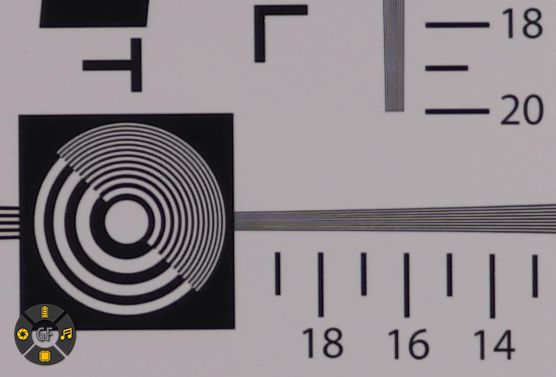

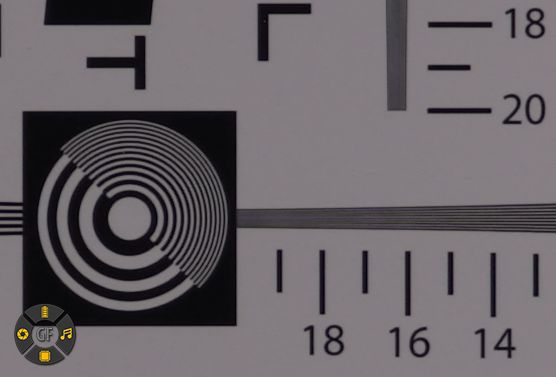
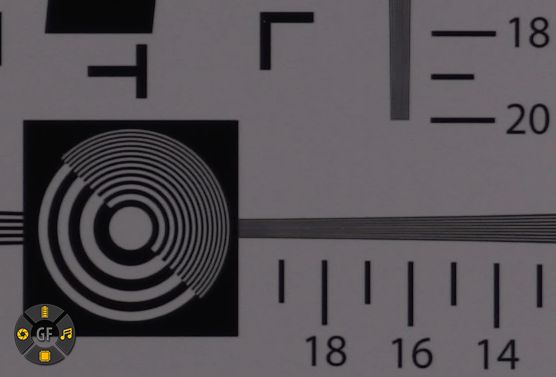
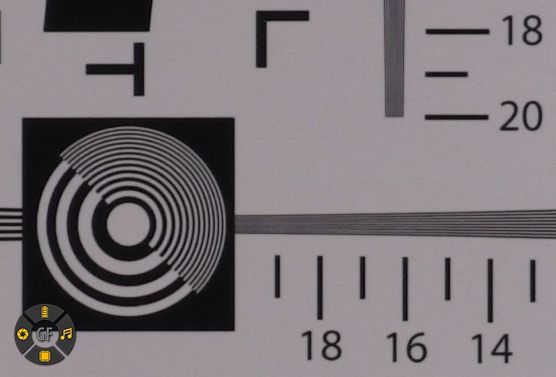
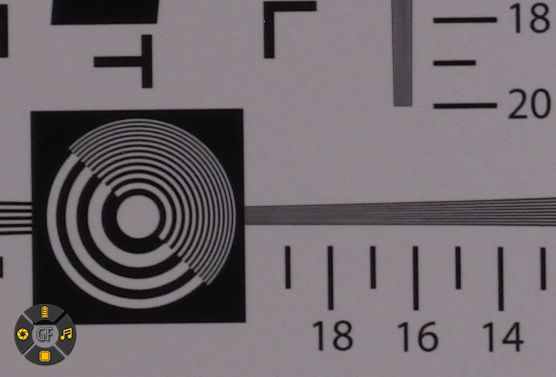
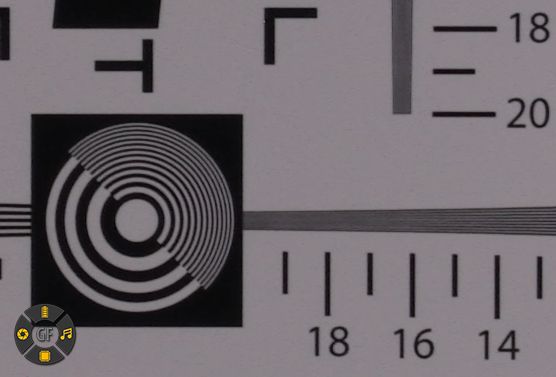







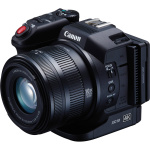

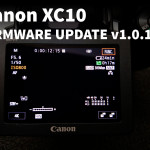
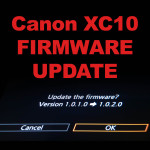
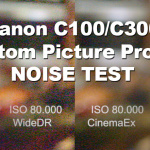
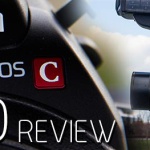
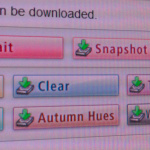
Great review. I didn’t get my Atomos CFast 1.0 128gb to record in 305bit on the XC10?
Have you had initialized your card before?
Many thanks for this comprehensive review. It was one of the best I’ve seen so far, hence I’ve subscribed.
Thanks for the kind words 🙂